A Novel Static Correction Approach for Eliminating the Effect of Geophones—A Case Study in Coal Reservoirs, Ordos Basin, China
Abstract
:1. Introduction
2. Theory and Methodology
2.1. Common Attitude Gathers (CAGs)
2.2. Static Correction Methodology Based on CAGs
3. Field Data Acquisition and Processing
3.1. Study Area
3.2. Data Acquisition and Processing
4. Results
4.1. Static Correction Methodology Based on CRGs
4.2. Static Correction Methodology Based on CAGs
5. Conclusions
Author Contributions
Funding
Acknowledgments
Conflicts of Interest
Nomenclature
| Y | Adjacent seismic traces in common attitude gathers |
| X | Distance from shot point to receiver point (m) |
| T | First break (s) |
| Time difference of the LMO (s) | |
| V | Near-surface velocity or refraction velocity (m/s) |
| j | Number of adjacent seismic traces |
| n | Total number of adjacent seismic traces |
Abbreviations
| 3D3C | Three-dimensional and three-component |
| CAG | Common attitude gather |
| CRG | Common receiving-point gather |
| LMO | Linear move-out |
| No. | Number |
References
- Fang, J.L.; Zhou, F.D.; Tang, Z.H. Discrete Fracture Network Modelling in a Naturally Fractured Carbonate Reservoir in the Jingbei Oilfield, China. Energies 2017, 10, 183. [Google Scholar] [CrossRef]
- Lu, J.; Wang, Y.; Chen, J.Y. Detection of Tectonically Deformed Coal Using Model-Based Joint Inversion of Multi-Component Seismic Data. Energies 2018, 11, 829. [Google Scholar] [CrossRef]
- Deere, J.; Cox, M. Introduction to This Special Section—Statics. Lead. Edge 2009, 28, 190–191. [Google Scholar] [CrossRef]
- Raef, A. Land 3D-seismic Data: Preprocessing Quality Control Utilizing Survey Design Specifications, Noise Properties, Normal Moveout, First Breaks, and Offset. J. Earth Sci. China 2009, 20, 640–648. [Google Scholar] [CrossRef]
- Zhu, X.; Gao, R.; Li, Q.S.; Guan, Y.; Lu, Z.W.; Wang, H.Y. Static Corrections Methods in the Processing of Deep Reflection Seismic Data. J. Earth Sci. China 2014, 25, 299–308. [Google Scholar] [CrossRef]
- Keho, T.H.; Kelamis, P.G. Focus on Land Seismic Technology: The Near-surface Challenge. Lead. Edge 2012, 31, 62–68. [Google Scholar] [CrossRef]
- Cox, M. Static Corrections for Seismic Reflection Surveys; Society of Exploration Geophysicists: Tulsa, OK, USA, 1999; ISBN 1560800801. [Google Scholar]
- Sun, Y.M.; Tonellot, T.; Kamel, B.; Bakulin, A. A Two-phase Automatic Static Correction Method. Geophys. Prospect. 2017, 65, 711–723. [Google Scholar] [CrossRef]
- Sheriff, R.E. Encyclopedic Dictionary of Applied Geophysics; Society of Exploration Geophysicists: Tulsa, OK, USA, 2002; ISBN 9781560802969. [Google Scholar]
- Hileman, J.A.; Embree, P.; Pflueger, J.C. Automated Static Corrections. Geophys. Prospect. 1968, 16, 326–358. [Google Scholar] [CrossRef]
- Taner, M.T.; Koehler, F.; Alhilali, K.A. Estimation and Correction of Near-Surface Time Anomalies. Geophysics 1974, 39, 441–463. [Google Scholar] [CrossRef]
- Taner, M.T.; Koehler, F. Surface consistent correction. Geophysics 1981, 46, 17–22. [Google Scholar] [CrossRef]
- Li, P.M.; Li, Z.H.; Zu, Y.F.; Hou, X.C. Model Constrained 3D First Break Refraction Static Correction. Oil Geophys. Prospect. 2003, 38, 199–202. [Google Scholar] [CrossRef]
- Lawton, D.C. Computation of Refraction Static Corrections Using First-break Travel-time Differences. Geophysics 1989, 54, 1289–1296. [Google Scholar] [CrossRef]
- Abdullatif, A.S. Refraction Statics Correction in Sand Dunes. In Proceedings of the 68th EAGE Conference and Exhibition Incorporating SPE EUROPEC, Vienna, Austria, 12–15 June 2006; pp. 78–82. [Google Scholar]
- Li, P.M.; Qian, R.J.; Feng, Z.Y.; Yang, X.L. An Intermediate Reference Datum Static Correction Technique and Its Applications. Appl. Geophys. 2005, 2, 80–84. [Google Scholar] [CrossRef]
- Liu, L.; Peng, S.P.; He, D.K.; Sun, L. Seismic Refraction Static Correction Using 3-C Digital Receivers in Ordos, China. In Proceedings of the 85th SEG International Exhibition and Annual Meeting, New Orleans, LA, USA, 18–23 October 2015; pp. 2401–2405. [Google Scholar]
- Becerra, C.; Agudelo, W.; Guevara, S. Uncertainty Analysis in Statics Corrections Obtained by Tomographic Inversion: Application in a Mountainous Zone in Catatumbo (Colombia). Lead. Edge 2009, 28, 212–215. [Google Scholar] [CrossRef]
- Xu, C.; Liu, Y.K.; Wang, H.; Li, F.Z.; Chen, J. 3D tomographic static correction. Geophysics 2002, 67, 1275–1285. [Google Scholar] [CrossRef]
- Malehmir, A.; Juhlin, C. An Investigation of the Effects of the Choice of Stacking Velocities on Residual Statics for Hardrock Reflection Seismic Processing. J. Appl. Geophys. 2010, 72, 28–38. [Google Scholar] [CrossRef]
- Xu, J.C.; Zhang, J.H. Residual Static Correction Based on Migrated Gathers. Chin. J. Geophys. Chin. Ed. 2016, 59, 655–663. [Google Scholar] [CrossRef]
- Xu, J.C.; Zhang, H.; Zhang, J.F. A Robust Surface-consistent Residual Phase Correction Method Based on Migrated Gather. Explor. Geophys. 2017, 49, 336–344. [Google Scholar] [CrossRef]
- Ronen, J.; Claerbout, J.F. Surface-consistent Residual Statics Estimation by Stack-power Maximization. Geophysics 1985, 50, 2759–2767. [Google Scholar] [CrossRef]
- Zou, M.; Zhou, Q.; Li, L.; Zhu, R.; Luo, K. Fast Residual Static Correction Method Using First Arrivals in the 3D Shot–receiver United Domain. Explor. Geophys. 2017, 48, 246–254. [Google Scholar] [CrossRef]
- Nørmark, E. Residual Static Corrections Considered as a Global Optimization Problem. J. Appl. Geophys. 1992, 29, 68–69. [Google Scholar] [CrossRef]
- Chen, Q.Y.; Wang, Y.C.; Duan, Y.Q.; Yuan, C.F. A Study on the Methods of Static Correction in Complicated Mountain Area. Geophys. Prospect. Pet. 2001, 40, 73–81. [Google Scholar] [CrossRef]
- Tang, J. An Analysis of Inconsistent Static Correction in Typical Surface Condition. Chin. J. Eng. Geophys. 2013, 10, 291–295. [Google Scholar] [CrossRef]
- Vermeer, G.J.O. 3D Seismic Survey Design; Society of Exploration Geophysicists: Tulsa, OK, USA, 2012; ISBN 9781560803034. [Google Scholar]
- He, D.K.; Peng, S.P. Correcting the Orientation of the Horizontal Receiver Based on the Common Attitude Gather in 3D3C Seismic Exploration. In Proceedings of the 78th EAGE Conference and Exhibition, Vienna, Austria, 3 May–2 June 2016. [Google Scholar]
- He, D.K.; Peng, S.P.; Sun, L.; Wang, S. A Method and Application for Surface-consistent Amplitude Compensating Based on Common Attitude Gather. J. China Coal Soc. 2017, 42, 465–471. [Google Scholar] [CrossRef]
- Bridle, R.; Aramco, S. Delay-time Refraction Methods Applied to a 3D Seismic Block. Lead. Edge 2009, 28, 228–237. [Google Scholar] [CrossRef]
- Du, W.F.; Peng, S.P. An application of 4D Seismic Monitoring Technique to Modern Coal Mining. Geophys. Prospect. 2017, 65, 823–839. [Google Scholar] [CrossRef]
- Guo, J.Y.; Zhou, X.Y.; Li, S.Y. Surface-consistent Statics Using Second Order Difference and Maximum Stack Energy. Oil Geophys. Prospect. 1992, 27, 361–370. [Google Scholar] [CrossRef]
- Mussel, J.W.; King, D.; Wason, C.B. Total differential statics: A comparative evaluation with other statics procedures. In Proceedings of the 56th SEG Conference and Exhibition, Houston, TX, USA, 2–6 November 1986. [Google Scholar]
- Jiang, Z.H.; Mao, Z.Q.; Shi, Y.J.; Wang, D.X. Multifractal Characteristics and Classification of Tight Sandstone Reservoirs: A Case Study from the Triassic Yanchang Formation, Ordos Basin, China. Energies 2018, 11, 2242. [Google Scholar] [CrossRef]
- Li, D.L.; Li, R.X.; Xue, T.; Wang, B.P.; Liu, F.T.; Zhao, B.S.; Zhao, D. Characteristic and Geological Implications of Major Elements and Rare Earth Elements of Triassic Chang 7 Oil Shale in Tongchuan City, Southern Ordos Basin (China). Minerals 2018, 8, 157. [Google Scholar] [CrossRef]
- Su, J.; Shen, Y.C.; Hao, J.; Liu, B. Shale Gas Content Calculation of the Triassic Yanchang Formation in the Southeastern Ordos Basin, China. Energies 2017, 10, 1949. [Google Scholar] [CrossRef]
- Wang, P.; Peng, S.P. A New Scheme to Improve the Performance of Artificial Intelligence Techniques for Estimating Total Organic Carbon from Well Logs. Energies 2018, 11, 747. [Google Scholar] [CrossRef]
- Zhang, J.L.; Liu, L.L.; Wang, R.S. Geostatistical Three-Dimensional Modeling of a Tight Gas Reservoir: A Case Study of Block S6 of the Sulige Gas Field, Ordos Basin, China. Energies 2017, 10, 1439. [Google Scholar] [CrossRef]

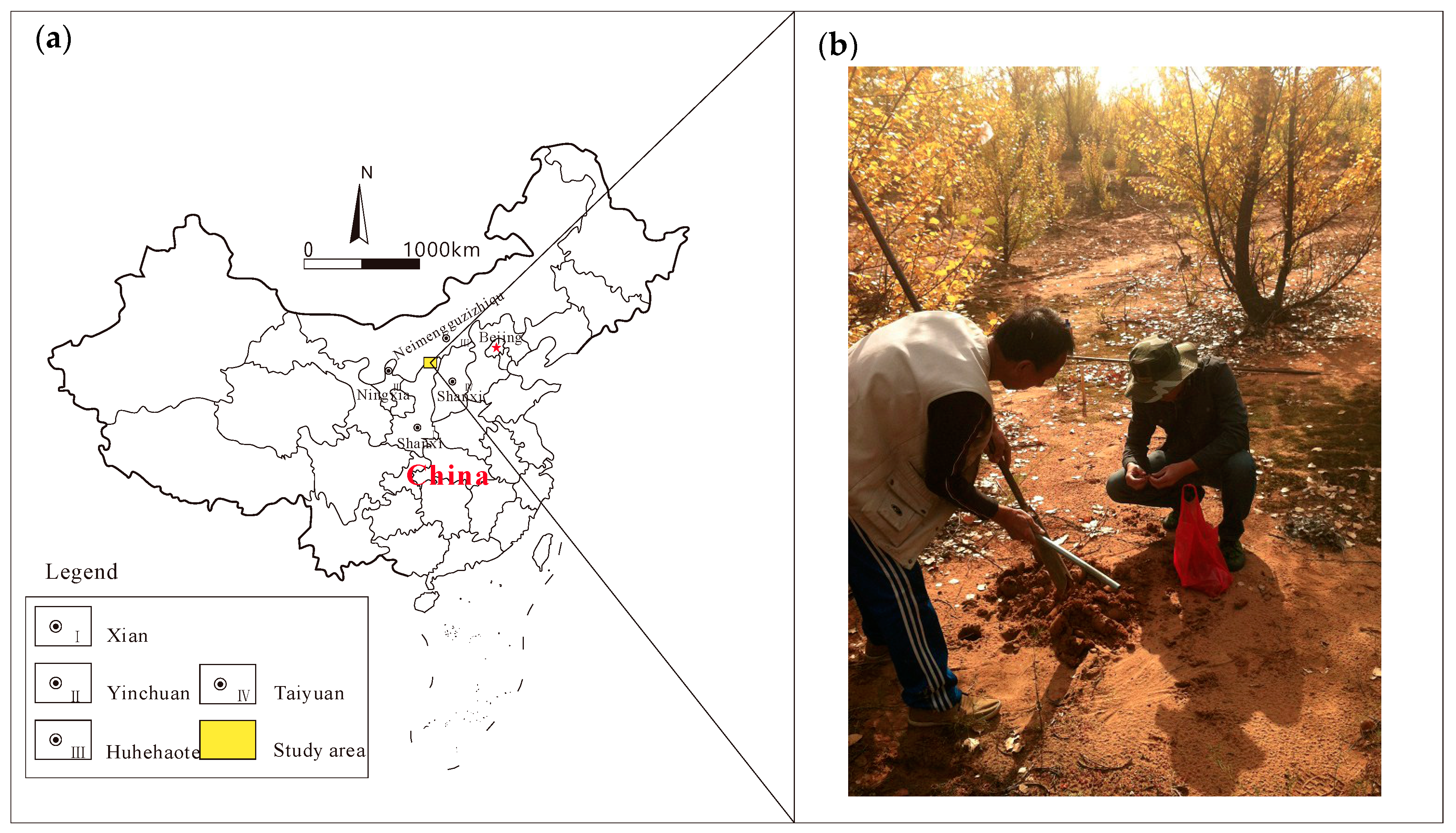
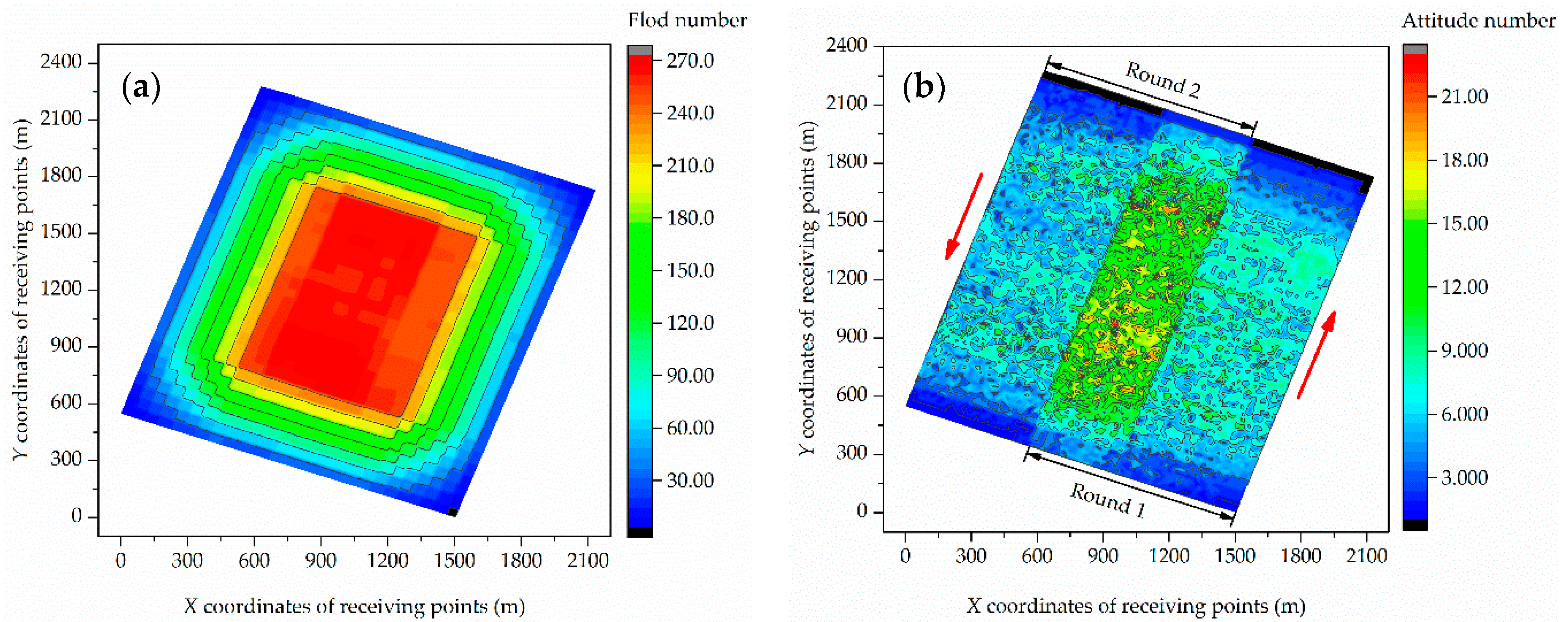
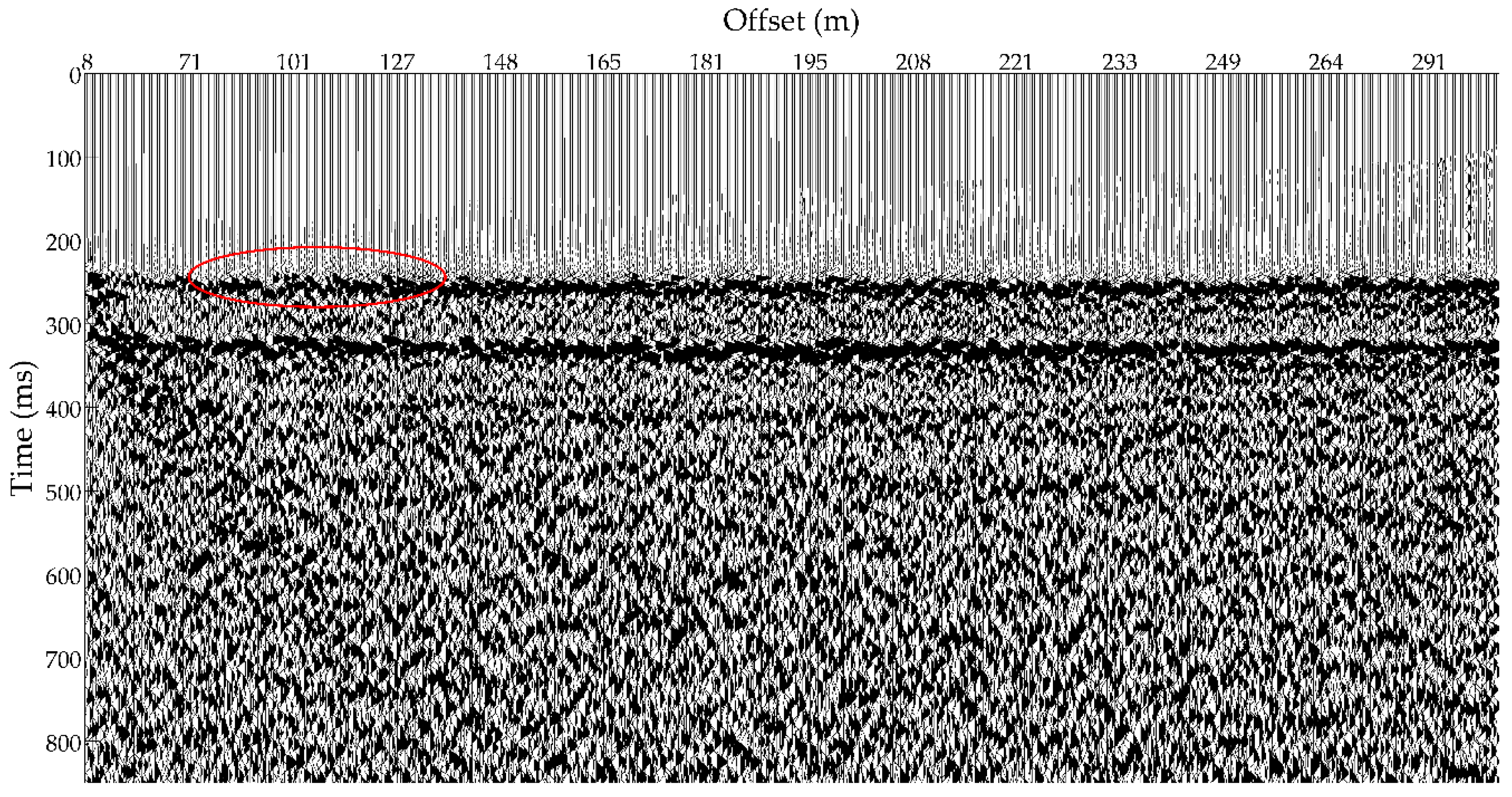
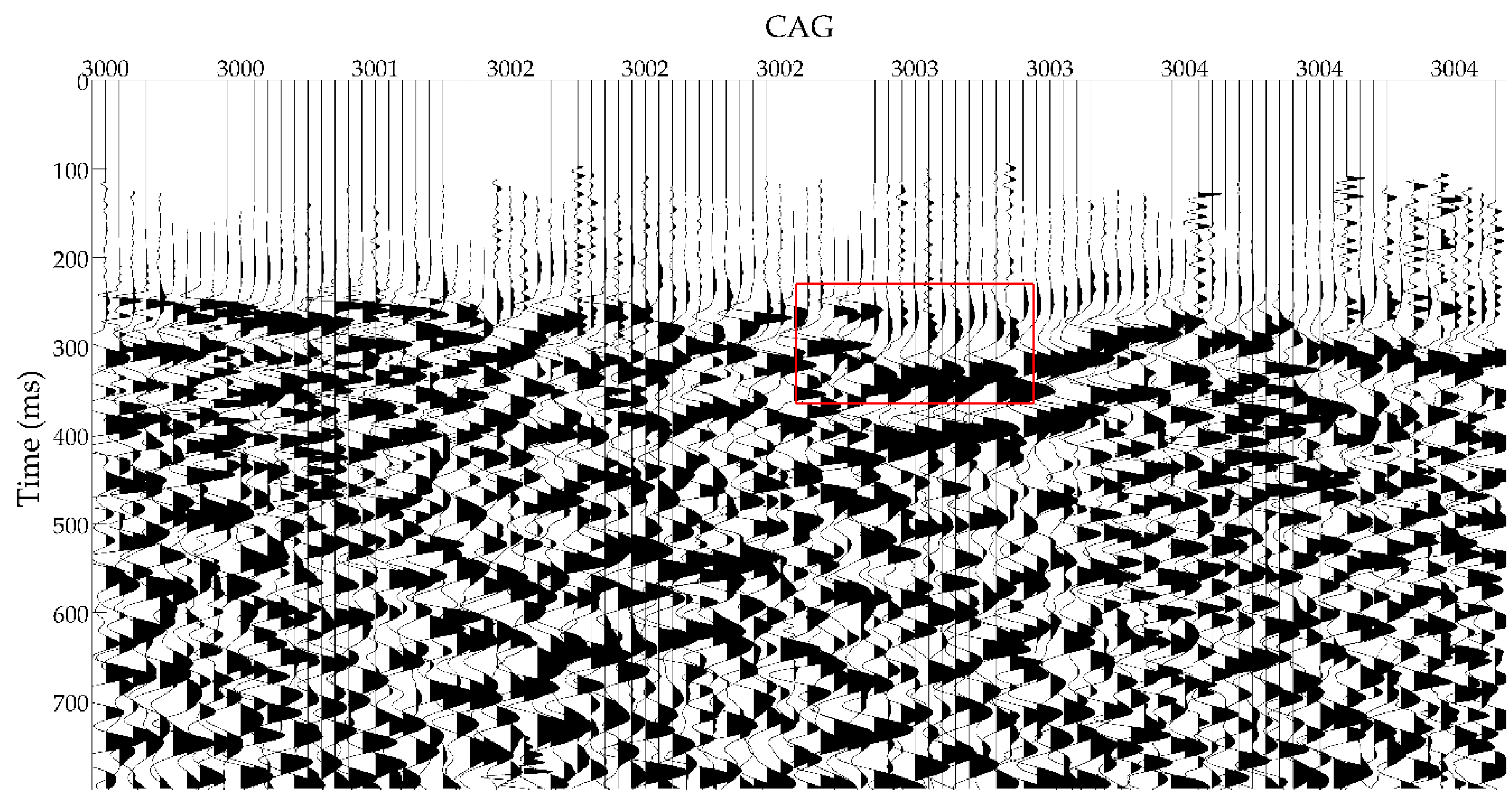
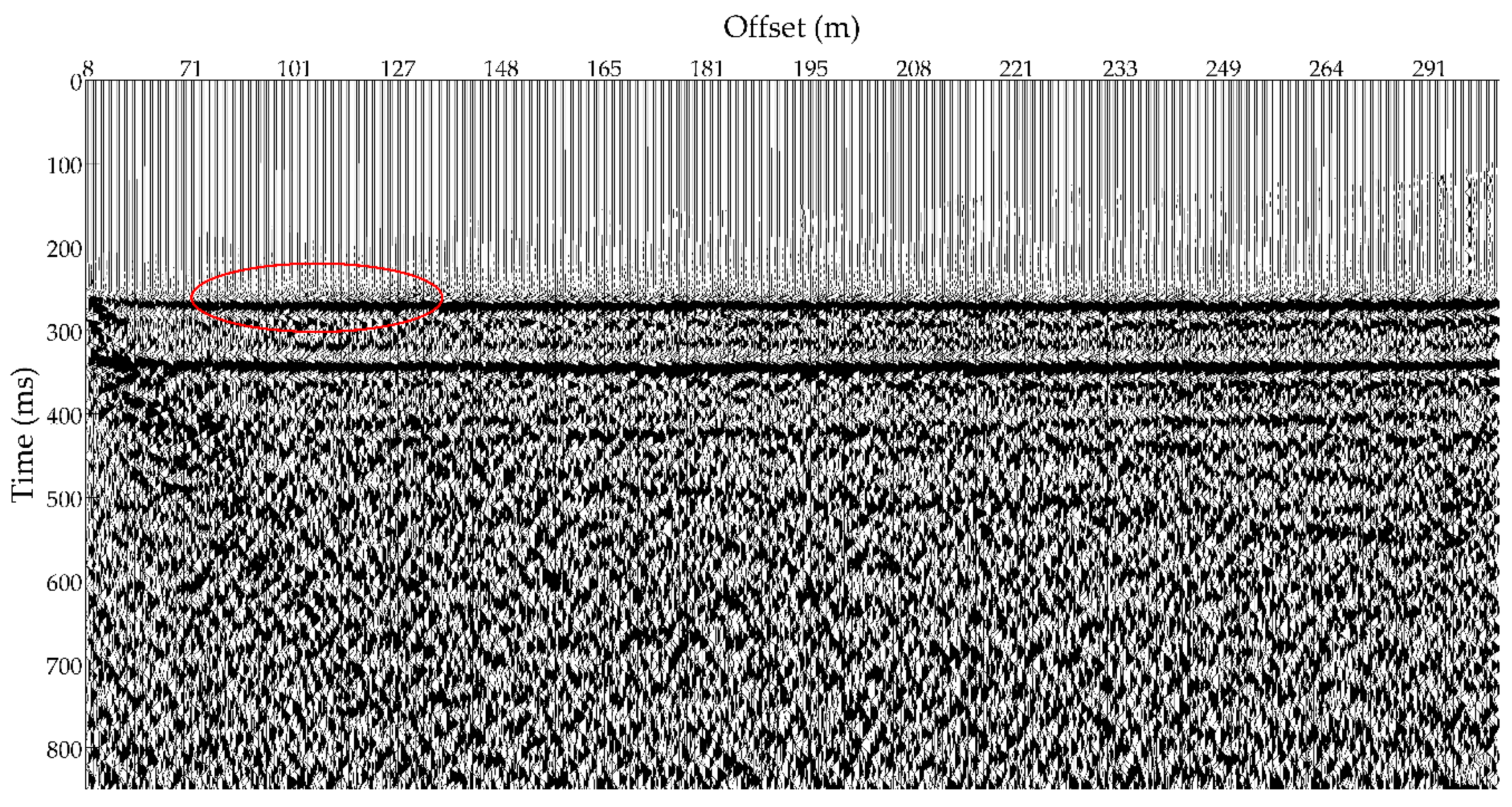
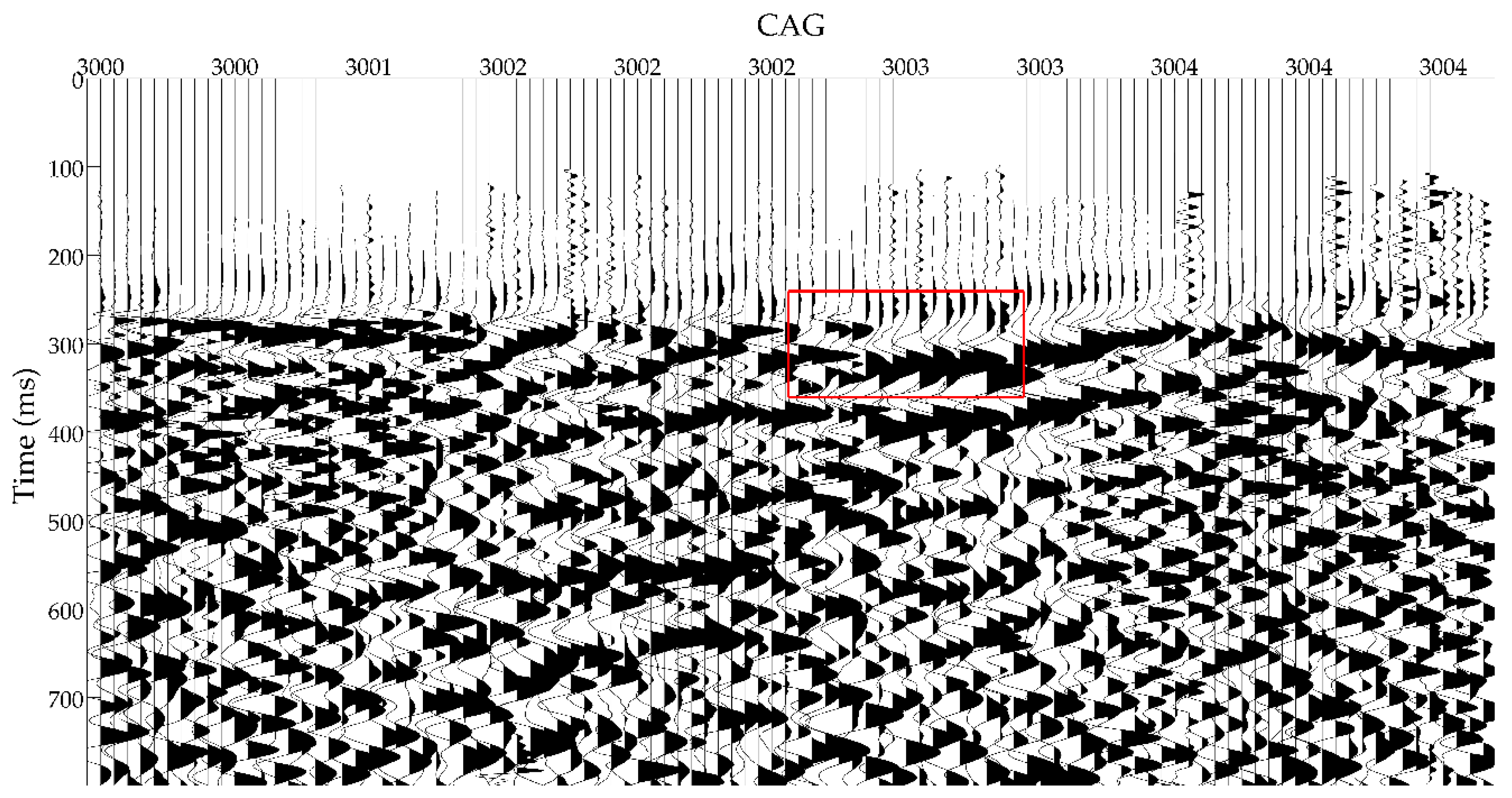
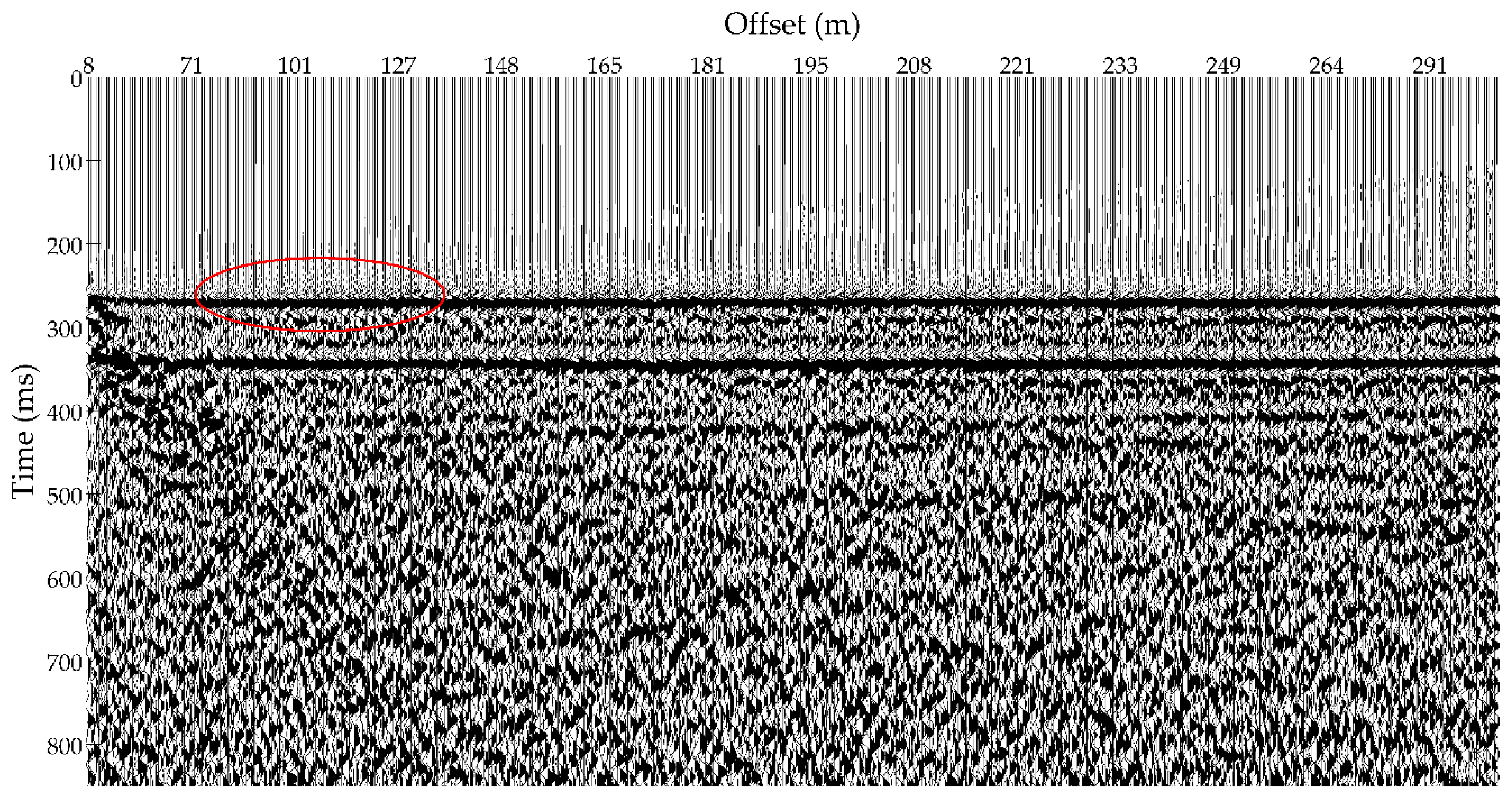
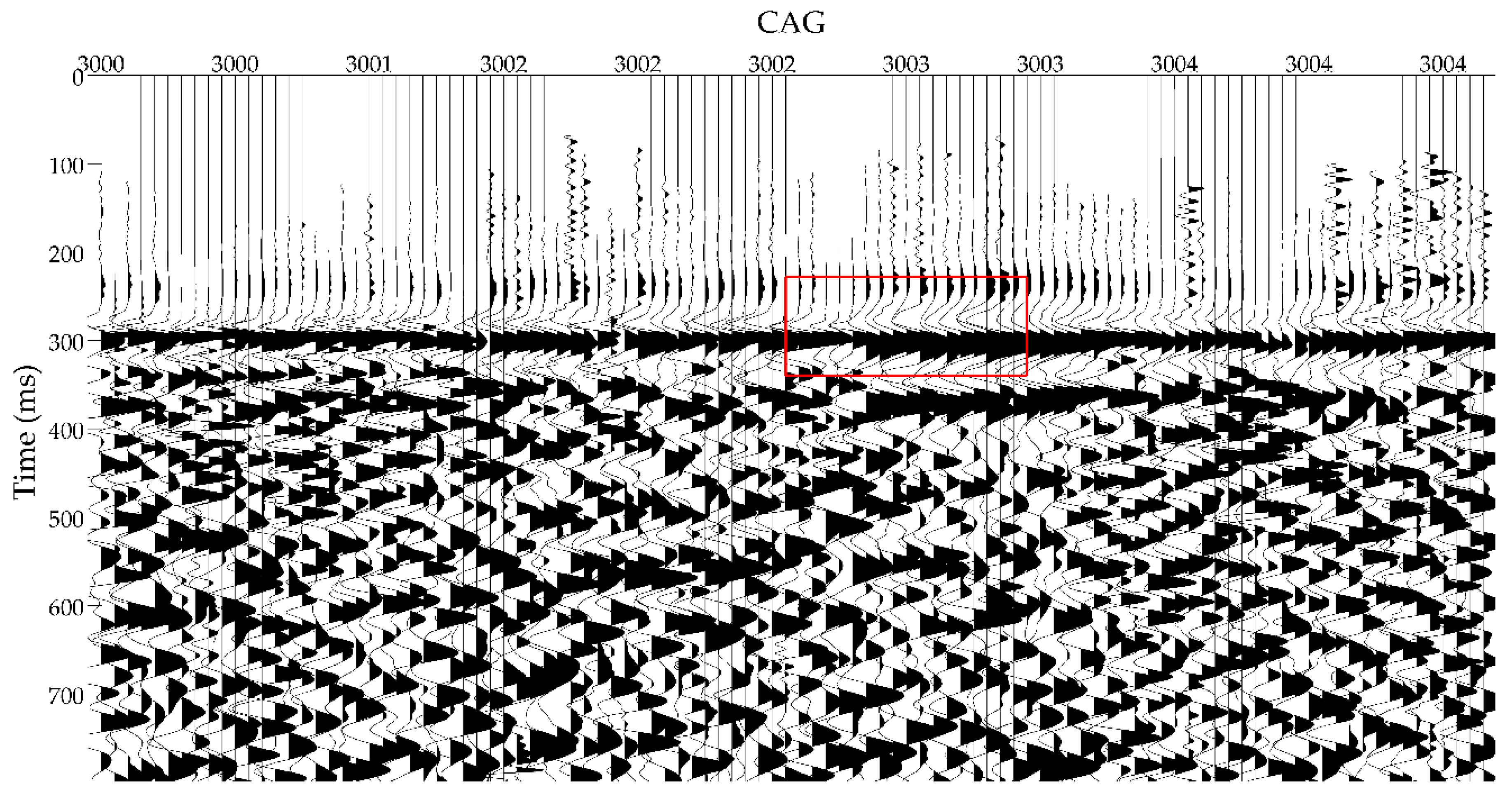
| Erathem | System | Group | Lithology Characteristics | |
|---|---|---|---|---|
| Cainozoic | Quaternary | Holocene | - | Silt and clay |
| Upper Pleistocene | Salawusu Formation | Silt and clay | ||
| Middle Pleistocene | Lishi Formation | Sandy soil and clay | ||
| Lower Pleistocene | Sanmen Formation | Gravel, sand, clay, marlstone | ||
| Mesozoic | Jurassic | Middle Jurassic | Zhiluo Formation | Medium-grain sandstone, fine sandstone, mudstone |
| Yanan Formation | Coarse feldspar sandstone, fine sandstone, coal | |||
| Lower Jurassic | Fuxian Formation | Coarse feldspar sandstone, fine sandstone, coal | ||
| Triassic | Upper Triassic | Yongping Formation | Fine sandstone, siltstone, mudstone | |
| Parameters | Number |
|---|---|
| Shot points in a pattern | 4 |
| Distance of shot point (m) | 30 |
| Receiver lines | 24 |
| Traces in a receiver line | 24 |
| Total traces in a pattern | 576 |
| Distance of inline/crossline (m) | 20 |
| Minimum distance from source to receiver (m) | 7.07 |
| Maximum distance from source to receiver (m) | 346.48 |
© 2018 by the authors. Licensee MDPI, Basel, Switzerland. This article is an open access article distributed under the terms and conditions of the Creative Commons Attribution (CC BY) license (http://creativecommons.org/licenses/by/4.0/).
Share and Cite
Sun, L.; Peng, S.; He, D. A Novel Static Correction Approach for Eliminating the Effect of Geophones—A Case Study in Coal Reservoirs, Ordos Basin, China. Energies 2018, 11, 3240. https://doi.org/10.3390/en11123240
Sun L, Peng S, He D. A Novel Static Correction Approach for Eliminating the Effect of Geophones—A Case Study in Coal Reservoirs, Ordos Basin, China. Energies. 2018; 11(12):3240. https://doi.org/10.3390/en11123240
Chicago/Turabian StyleSun, Liang, Suping Peng, and Dengke He. 2018. "A Novel Static Correction Approach for Eliminating the Effect of Geophones—A Case Study in Coal Reservoirs, Ordos Basin, China" Energies 11, no. 12: 3240. https://doi.org/10.3390/en11123240
APA StyleSun, L., Peng, S., & He, D. (2018). A Novel Static Correction Approach for Eliminating the Effect of Geophones—A Case Study in Coal Reservoirs, Ordos Basin, China. Energies, 11(12), 3240. https://doi.org/10.3390/en11123240





